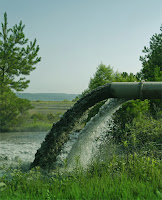People today should always be aware of the possibilities of
food contamination. Anyone can be affected by chemical, physical, and
biological contamination's. Chemical contamination means the food that you are
eating has been contaminated by some kind of chemical substance. This can occur
because you mixed the food with a chemical or because the distributors of the
product mixed it with a chemical. Chemicals should always be placed far away
from anything that will enter the body. A physical contamination can occur when
an object that is already contaminated touches or encounters the food. A
physical object could be a dirty band aid that has come in contact with your
food. Lastly, a biological contamination occurs when bacteria, viruses and more
come in contact with the food. This contamination can come from saliva, blood,
etc.
 |
| http://www.webstaurantstore.com/article/48/preventing-cross-contamination.html |
Biological contaminates can occur through bacteria, viruses,
parasites, fungi, and biological toxins (poison). Bacteria
can be found in everything from air to human beings. It is a microorganism that
can survive in any temperature. The best ways for bacteria to grow can be made
into the acronym, FAT TOM. The F stands for food. Dairy products, meat, fish,
etc. are great sources for bacteria to feed off of. The A stands for acidity,
meaning bacteria grows better in lightly acidic food. The first T stands for
temperature. Bacteria will grow the most between the temperature of 41 ᵒF and 135 ᵒF.
The second T stands for time. The longer the bacteria has to grow, the more the
bacteria will actually grow. The O stands for oxygen. The amount of oxygen needed
for the bacteria can differ since some bacteria do need oxygen and others do
not. Lastly, the M stands for moisture. The more moisture the higher growth of
bacteria.
 |
| http://www.ocfoodinfo.com/illness/risk |
Viruses are the next biological contaminate. Viruses can reproduce
but only by using other living cells like animal or human cells. They cannot
grow or reproduce on food but they can survive hot and freezing temperatures, meaning
they cannot be killed during the cooking process. Parasites are also a
biological contaminate that can reproduce. They use animals and humans to
transport themselves from object to object. Parasites cannot live through the cooking
process so making sure that food is properly cooked/frozen is important. Fungi
is another biological contaminate. Mold, different kinds of yeast and mushrooms
fall under the fungi category and all can be eaten. Lastly, biological toxins
(poisons) are another biological contaminate. Although this biological
contaminate is not common in meat, fish can easily contain toxins. The toxins are
already in the fish and has to be removed or cooked properly so the person is
not contaminated.
 |
| http://www.rappler.com/move-ph/issues/hunger/89988-food-safety-tips |
Foodborne illnesses can easily be avoided. However, the cause for
foodborne illnesses can differ. Five causes of foodborne illnesses can be
avoided by making sure everything is clean. From employee’s hands to the silver
ware that is used, everything must be clean. The first cause of foodborne
illnesses is ‘Improper hot and cold holding temperature of potentially
hazardous foods’. The second cause is ‘Improper cooking temperatures of foods’.
The third cause is ‘Dirty or contaminated utensils and equipment’. The fourth
cause is ‘Poor employee health and hygiene’. The last cause is ‘Poor employee
health and hygiene’. Without the proper sanitation of food, people, or objects,
humans can become sick with multiple different diseases. Some diseases can
include Salmonella, Campylobacter, Mad cow disease and more.

















